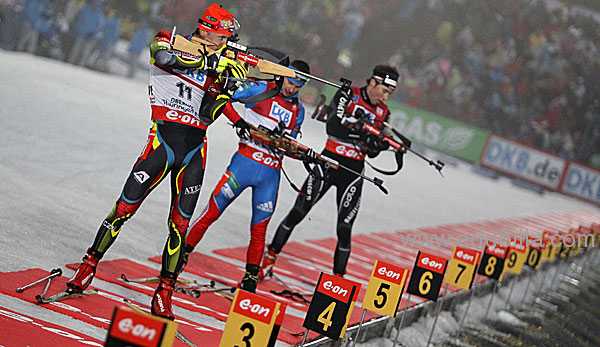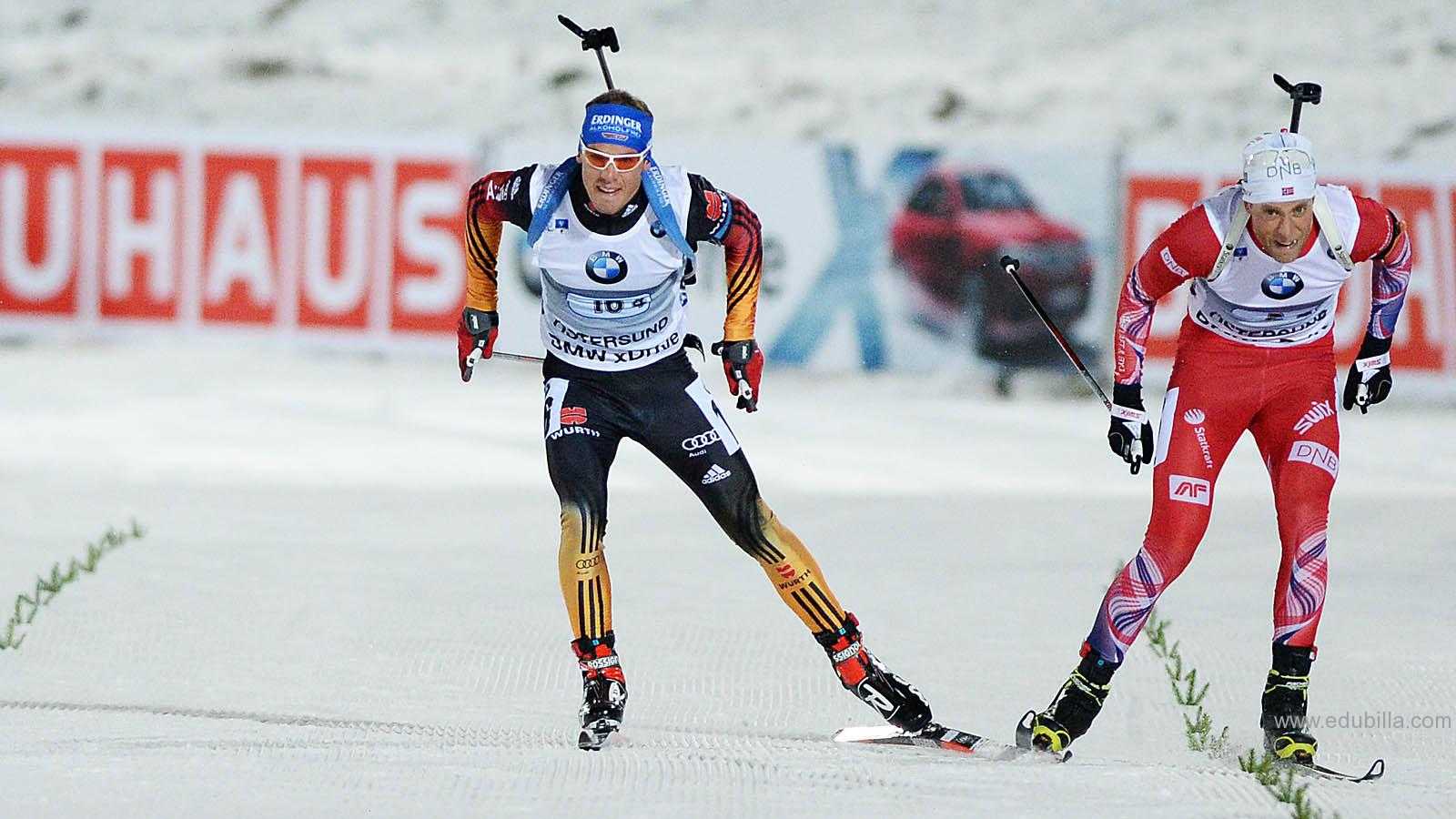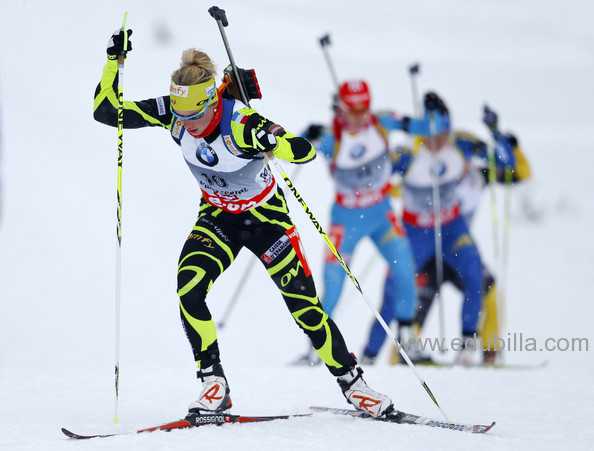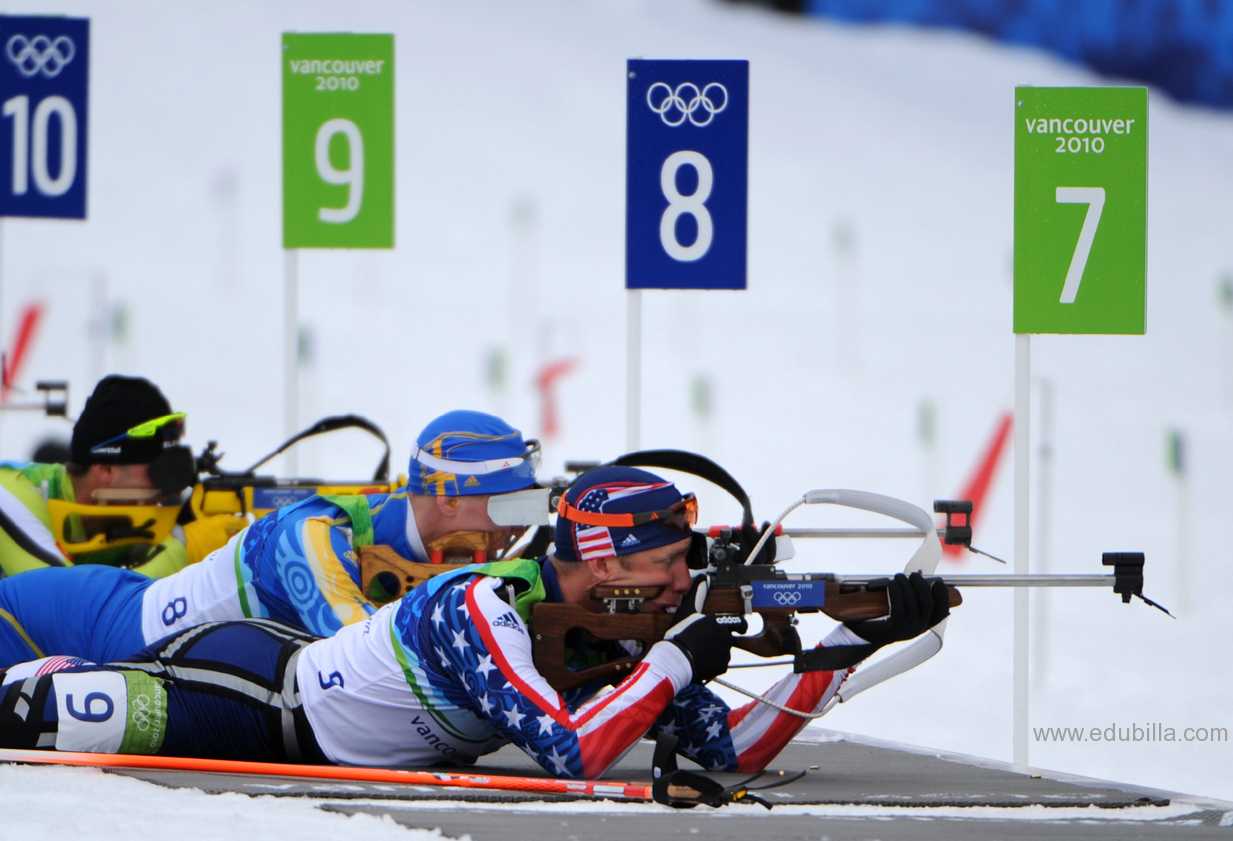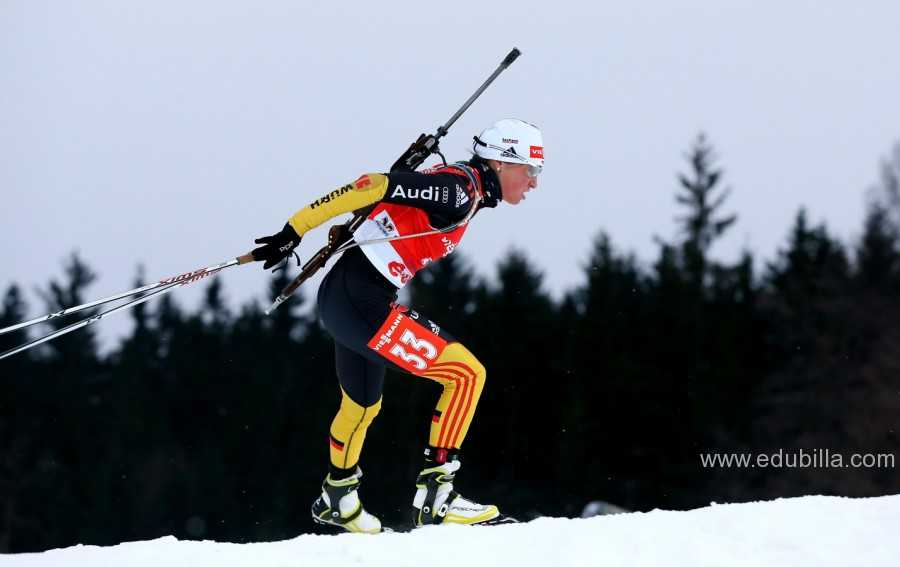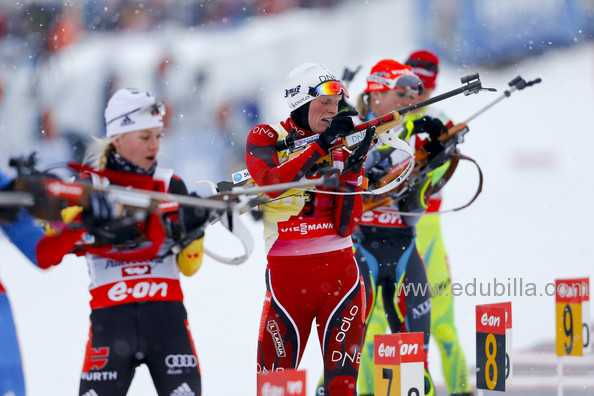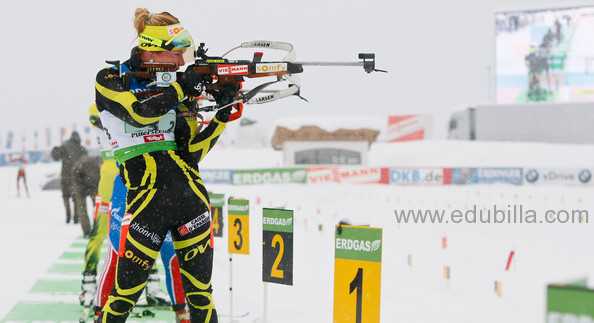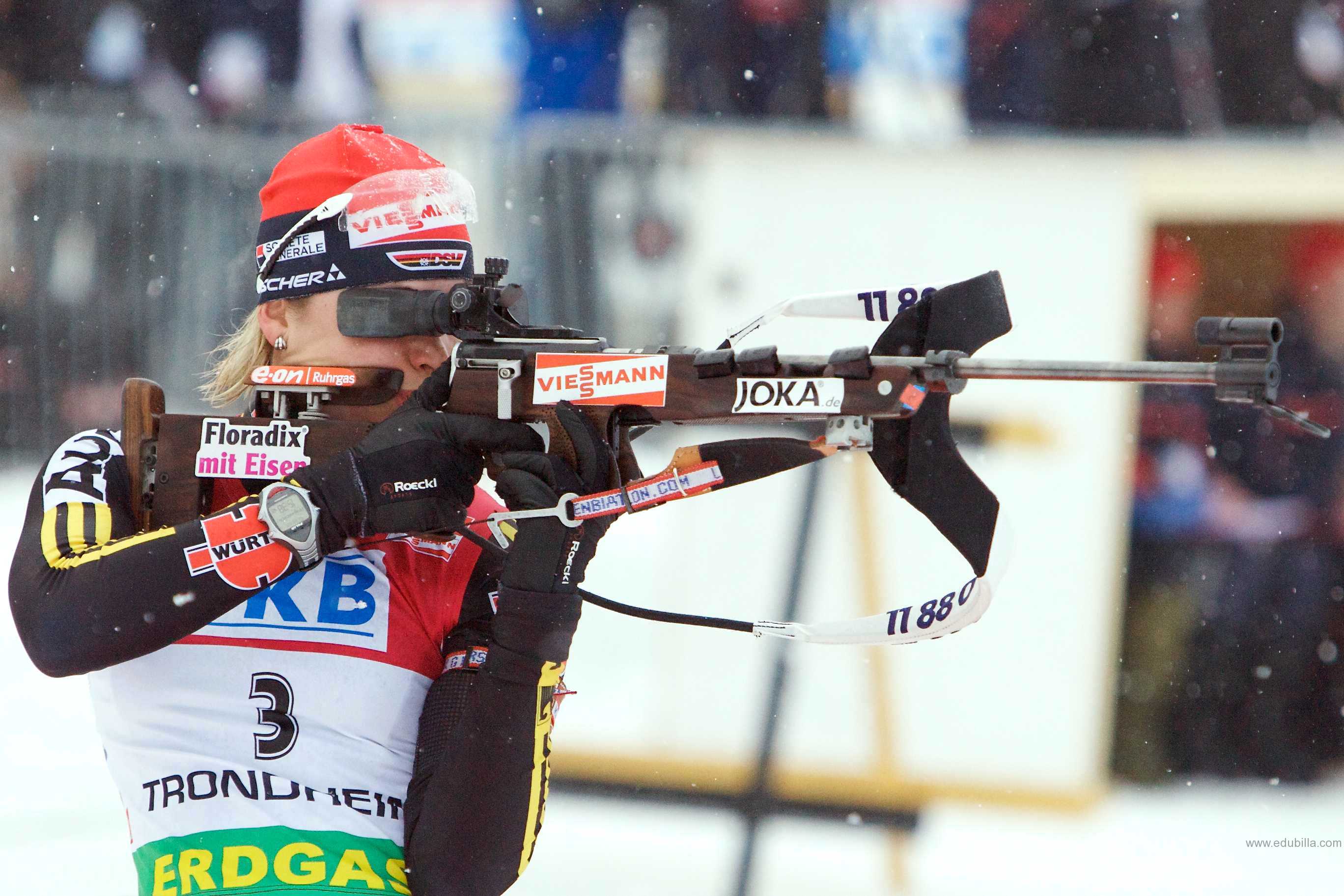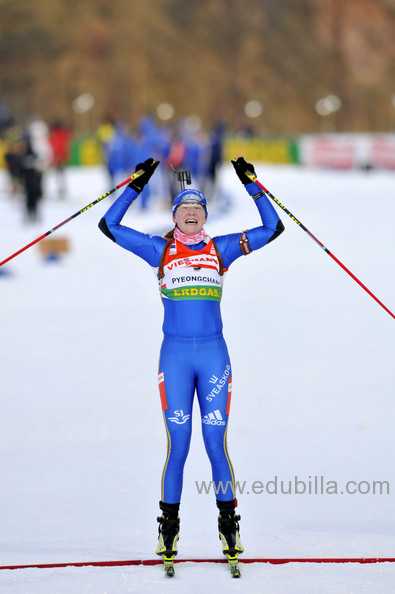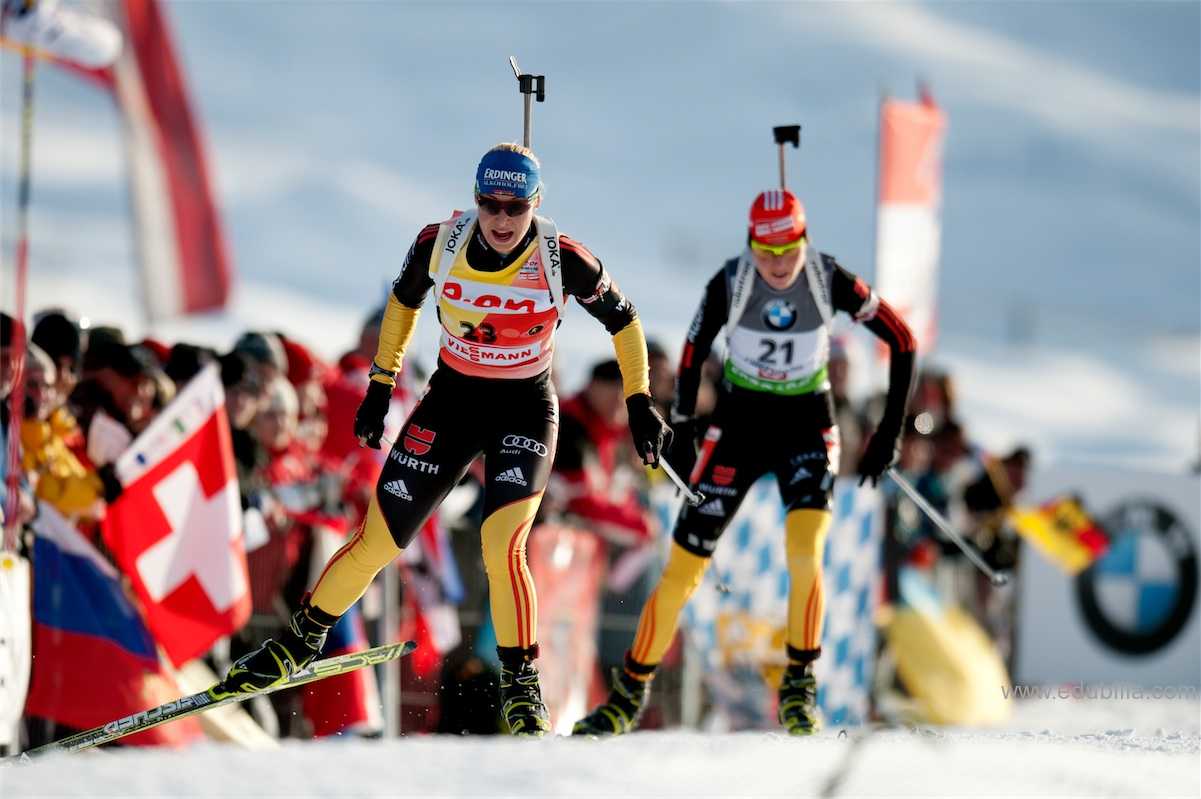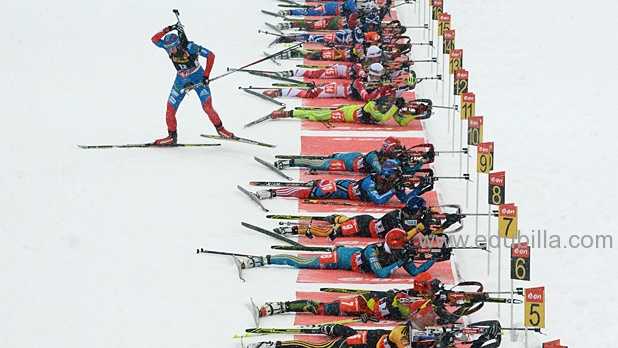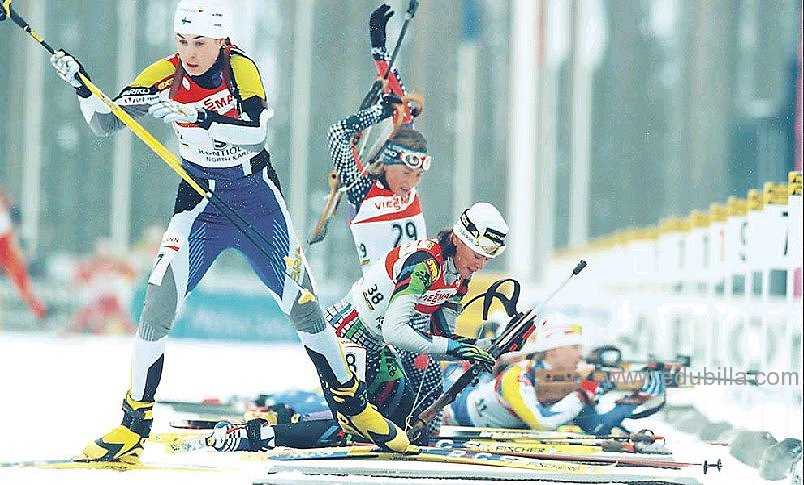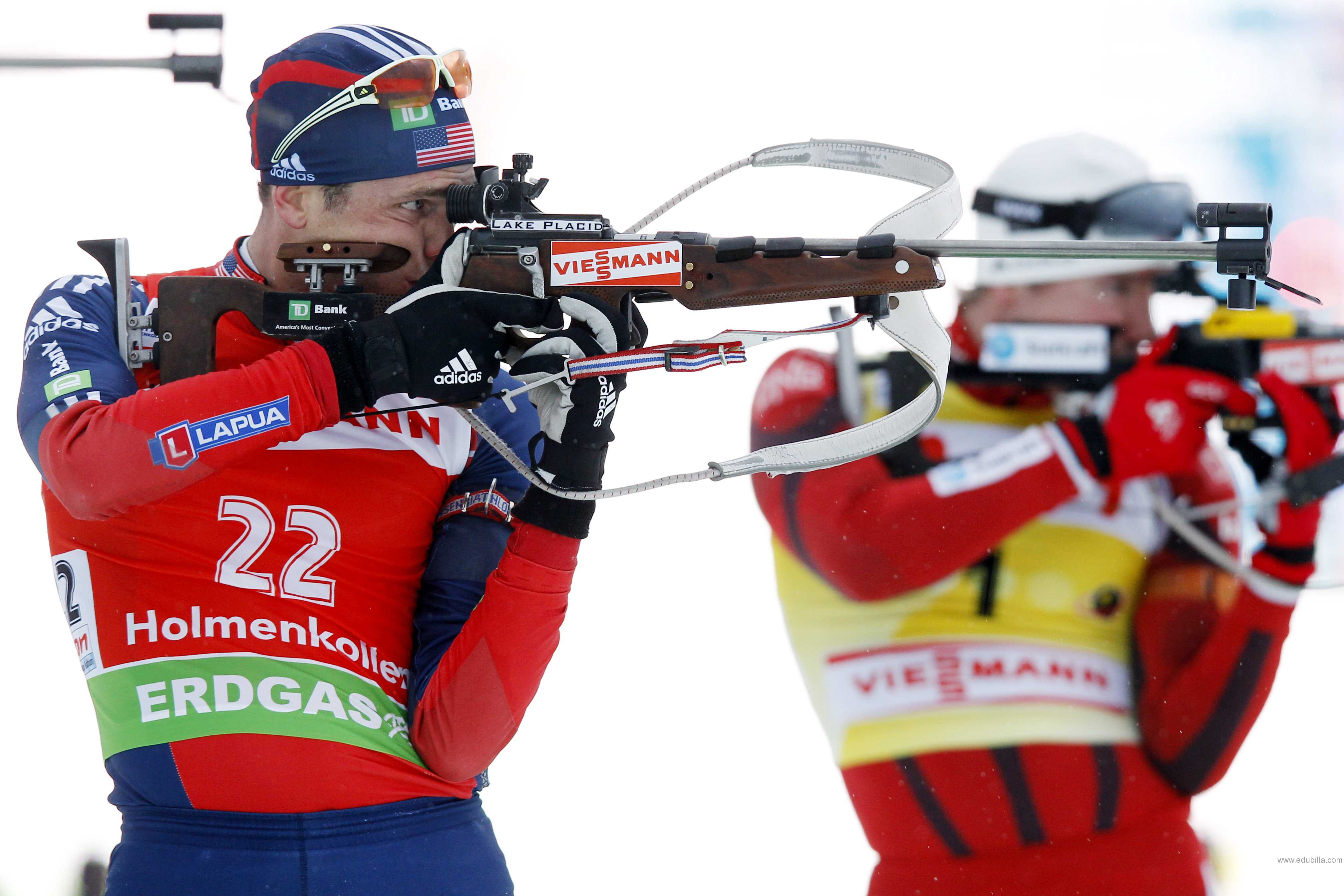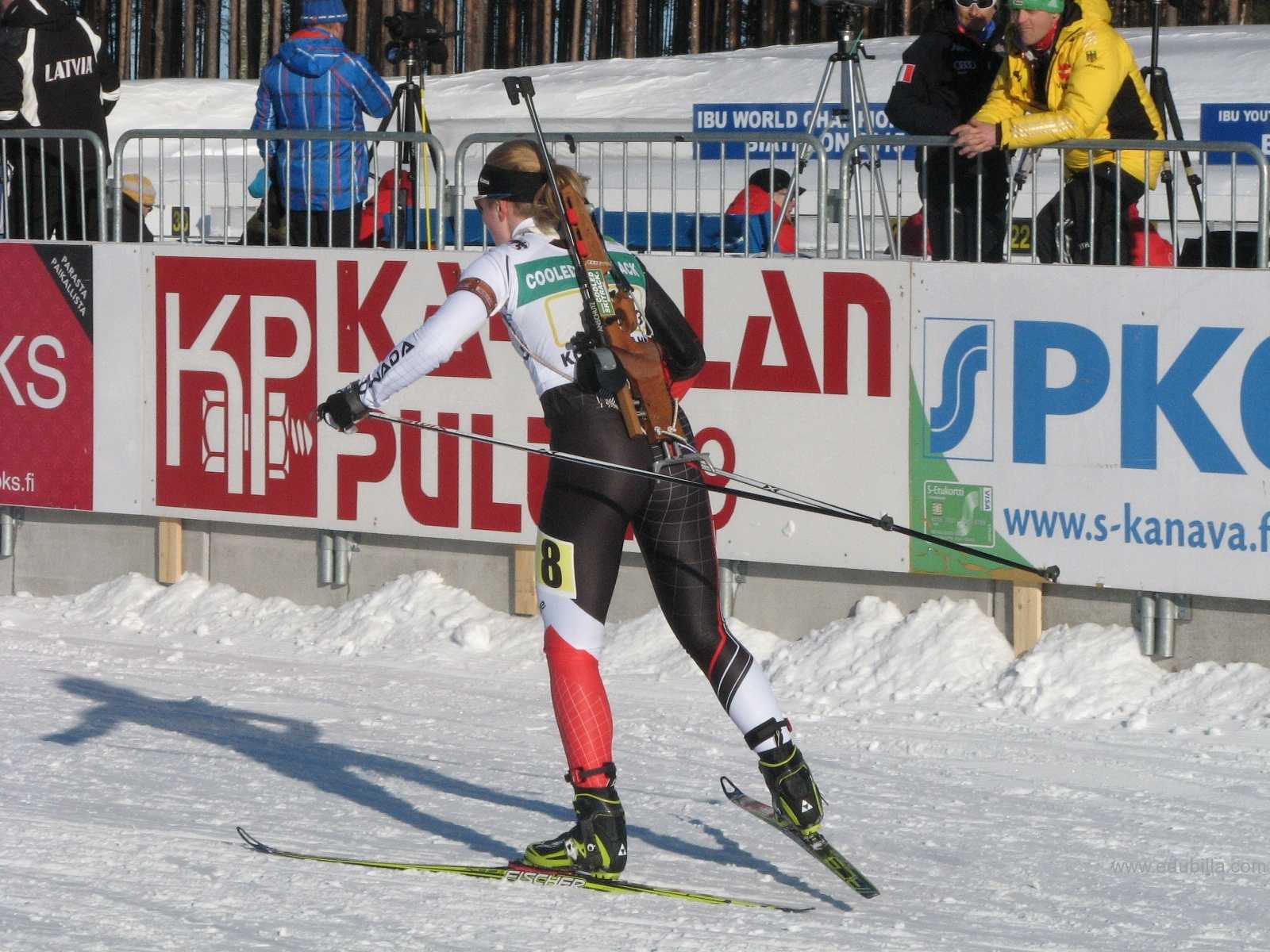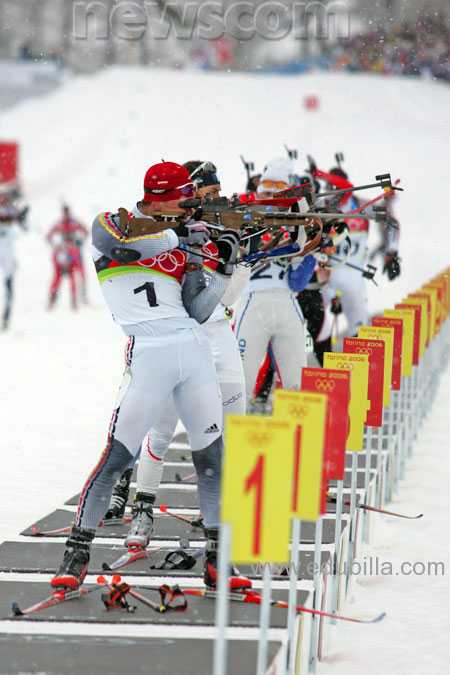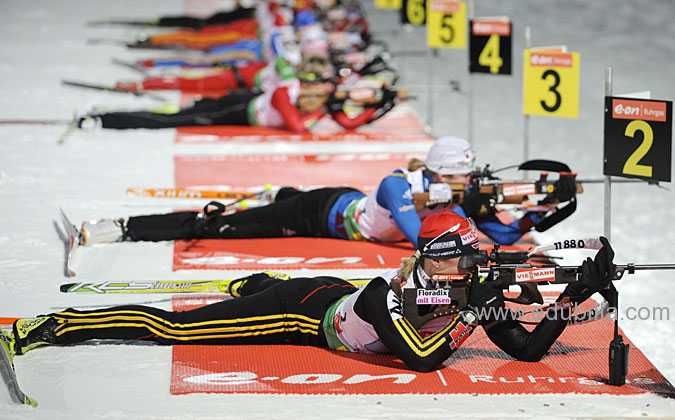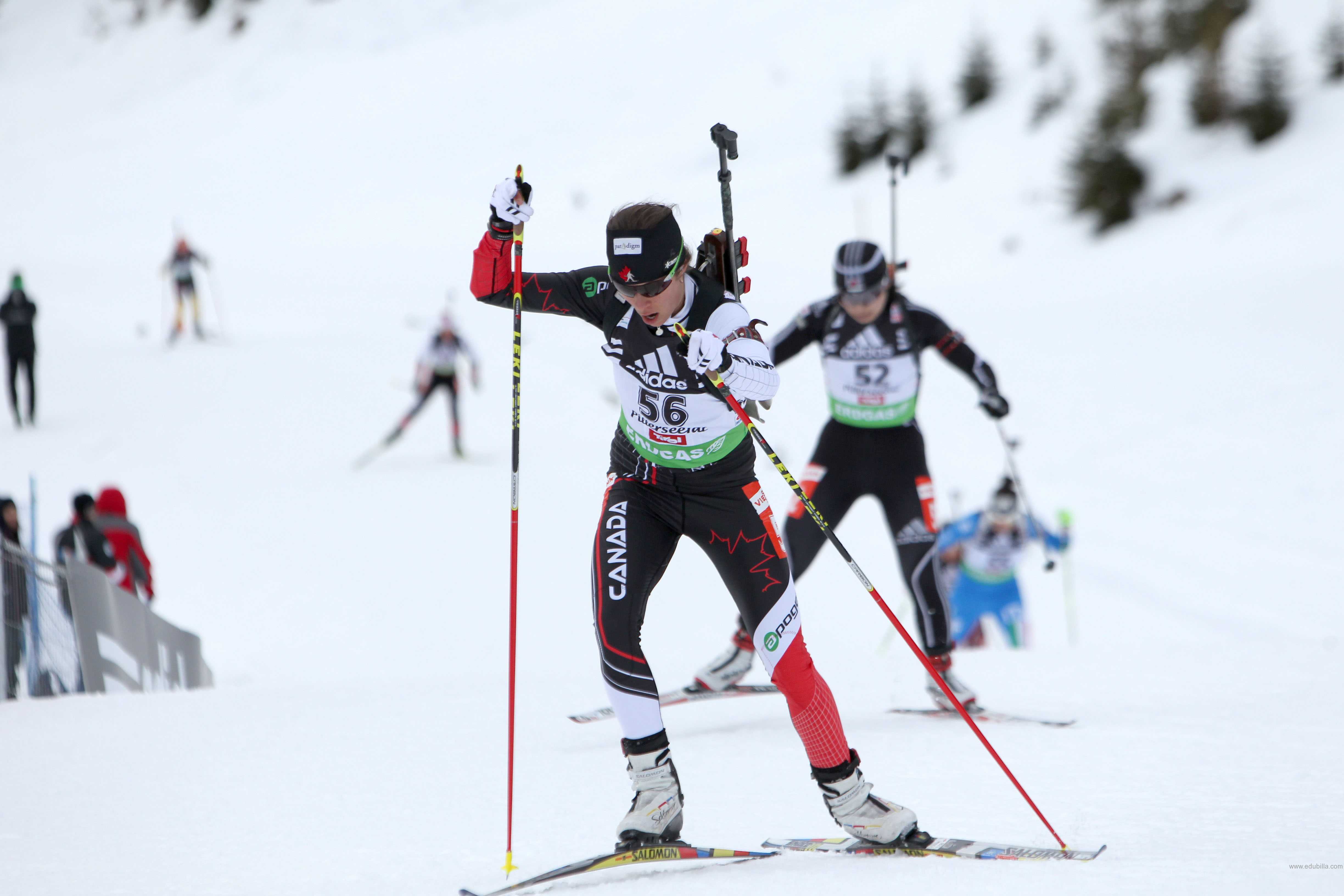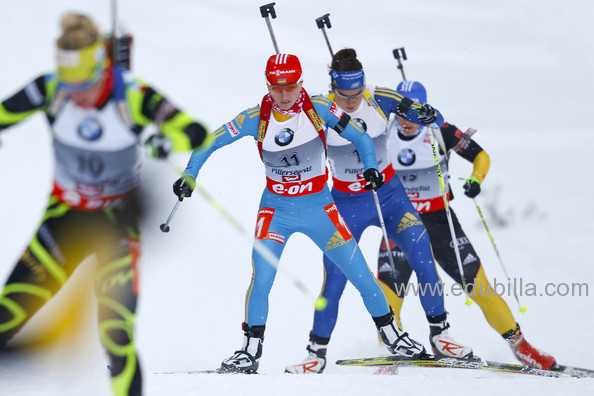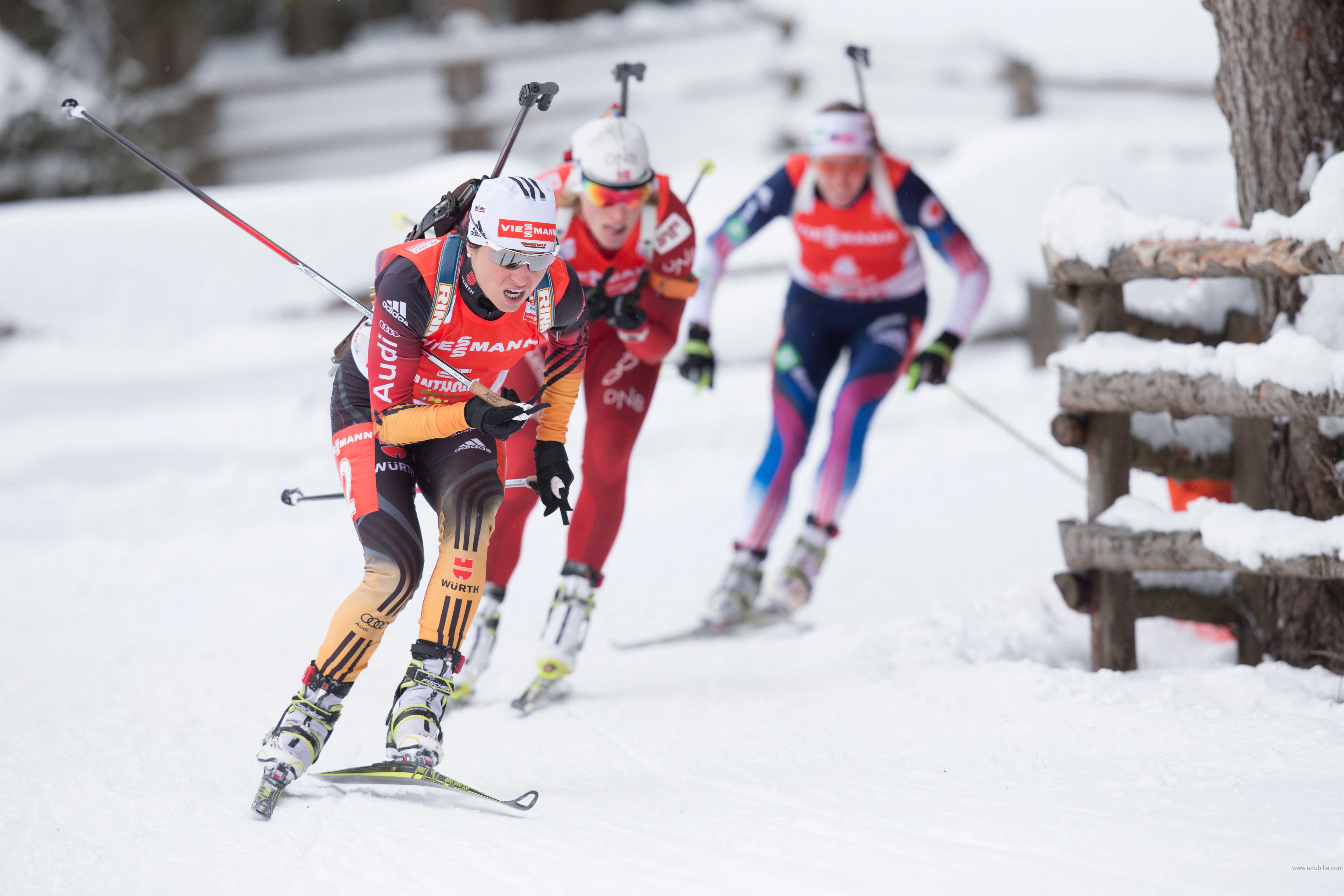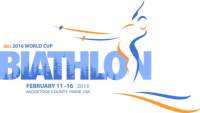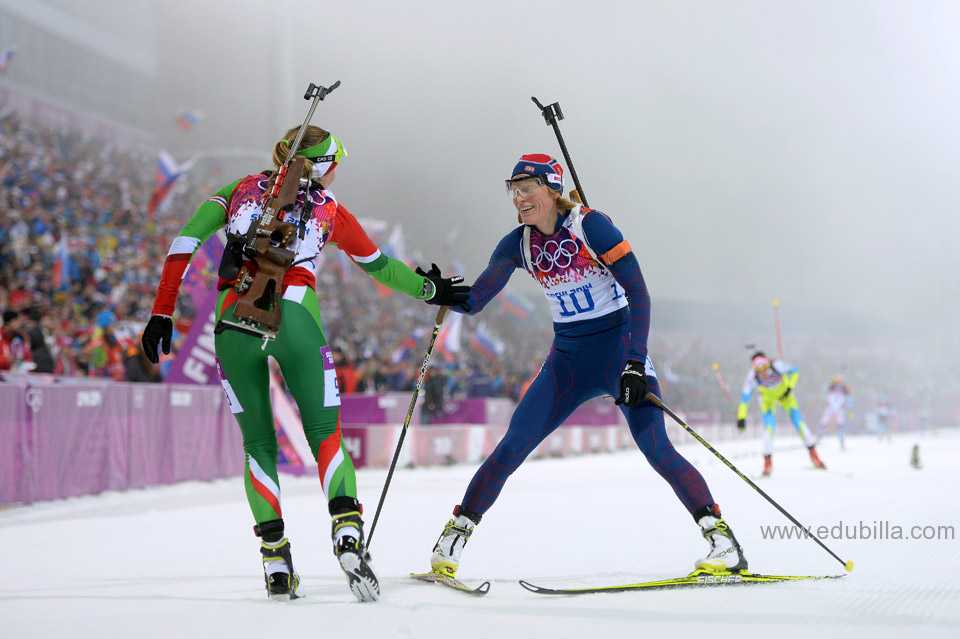
Overview Of Biathlon
Biathlon is a winter sport that combines cross-country skiing and rifle shooting.Biathlon is a Winter Olympic Sport which combines cross country skiing with precision target shooting. There is also a warm weather variant called Summer Biathlon which replaces skiing with running. In a typical Winter race, a Biathlete is required to ski with his or her rifle over a set distance to a shooting range, where five shots at five knockdown targets 50 m down range are taken from prone position. Depending on the format, either a time penalty or penalty laps are assessed for missed shots.
Competitions:
The competitions from 1958 to 1965 used high-power centerfire cartridges, such as the .30-06 Springfield and the 7.62x51mm NATO, before the .22 Long Rifle rimfire cartridge was standardized in 1978. The ammunition was carried in a belt worn around the competitor's waist. The sole event was the men's 20 kilometres (12 mi) individual, encompassing four separate ranges and firing distances of 100 metres (330 ft), 150 metres (490 ft), 200 metres (660 ft), and 250 metres (820 ft). The target distance was reduced to 150 metres (490 ft) with the addition of the relay in 1966. The shooting range was further reduced to 50 metres (160 ft) in 1978 with the mechanical targets making their debut at the 1980 Winter Olympics in Lake Placid.
Winter Warfare:
Historical descriptions of warriors on skiis also date back to before Christ, and include writings from Xenophon, Strabol, Arrian, Teophanes, Prokopius, and Acruni. Traditional military patrol races came into being in the Middle Ages. Skiing regiments were active in Scandinavia and Russia in the 1500's, and by the end of the 19th century, Germany, Austria and Switzerland also had soldiers on skiis.
Competition format:
- Individual
- Sprint
- Pursuit
- Mass start
- Relay
- Mixed relay
- Team (obsolete)
Biathlon variants:
- Two common variations on traditional winter biathlon are summer biathlon, where skiing is replaced by a cross-country running or roller-skiing, and archery biathlon (ski archery), where the rifle is replaced by a recurve bow.
- There have also been summer competitions in roller-ski biathlon, mountain bike biathlon, orienteering biathlon, and run archery. Primitive Biathlon uses snowshoes and muzzleloaders.
- The Boy Scouts of America offers a Bikeathlon variant at their national Scout jamboree that mixes BMX biking with air rifle shooting at biathlon type targets.
- Cadets Canada also offers biathlon to cadets across Canada, with three stages: zones, provincial, and national. Zone competitions are occasionally, due to lack of snow in some southern areas, held as summer biathlon. A .22LR caliber rifle is used at all levels. Races are shorter than world class events.
- The World Police and Fire Games offer a summer variant which combines cross-country running with service pistol shooting.
- The Russian Military runs tank biathlon competitions.
Game Rules
A biathlon competition consists of a race in which contestants ski around a cross-country trail system, and where the total distance is broken up by either two or four shooting rounds, half in prone position, the other half standing. Depending on the shooting performance, extra distance or time is added to the contestant's total running distance/time. The contestant with the shortest total time wins.
For each shooting round, the biathlete must hit five targets; the skier receives a penalty for each missed target, which varies according to the competition rules, as follows:
Skiing around a 150-metre (490 ft) penalty loop—typically taking 20–30 seconds for elite biathletes to complete, depending on weather and snow conditions.
Adding one minute to the skier's total time.
Use of an extra cartridge (placed at the shooting range) to hit the target; only three such extras are available for each round, and a penalty loop must be made for each target left standing.
In order to keep track of the contestants' progress and relative standing throughout a race, split times (intermediate times) are taken at several points along the skiing track and upon finishing each shooting round. The large display screens commonly set up at biathlon arenas, as well as the information graphics shown as part of the TV picture, will typically list the split time of the fastest contestant at each intermediate point and the times and time differences to the closest runners-up.
Skiing Details:
All cross-country skiing techniques are permitted in biathlon, which means that the free technique is usually the preferred one, being the fastest. No equipment other than skis and ski poles may be used to move along the track. Minimum ski length is the height of the skier less 4 centimetres (1.6 in). The rifle has to be carried by the skier during the race at all times.
Shooting Details:
The biathlete carries a small bore rifle, which weighs at least 3.5 kilograms (7.7 lb), excluding ammunition and magazines. The rifles use .22 LR ammunition and are bolt action or Fortner (straight-pull bolt) action.
The target range shooting distance is 50 metres (160 ft). There are five circular targets to be hit in each shooting round. When shooting in the prone position the target diameter is 45 millimetres (1.8 in); when shooting in the standing position the target diameter is 115 millimetres (4.5 in). On all modern biathlon ranges, the targets are self-indicating, in that they flip from black to white when hit, giving the biathlete as well as the spectators instant visual feedback for each shot fired.
Detailed Biathlon Rules Can Be Downloaded From Documents
Equipments Need For Biathlon
Arm sling:
Used to stabilise the rifle while shooting.
Boots:
These are more rigid and have more ankle support than classic technique boots because they are subject to considerable lateral pressure.
Clip:
Also called a magazine. Used to hold five .22-calibre rifle cartridges. Up to four clips can be stored in the rifle stock while the athlete skis the course. At the range, the clips are taken from the stock and inserted into the rifle as needed.
Fore sight:
A marker at the end of the barrel that aids in aligning a shot with the target.
Harness:
Used to carry the rifle on the athlete's back while skiing.
Magazine:
Holds clips. Each clip holds five .22-calibre rifle cartridges; up to four clips can be stored in the rifle stock while the athlete skis the course.
Rear sight:
A clear cylinder that magnifies the target (to align the target correctly, the fore sight should be perfectly centred in the rear sight; generally, one eye is shut to eliminate distractions).
Ski poles:
Poles are generally longer and stiffer than those used for classic technique and extend to the chin or mouth of the skier; baskets and tips have the same design as classic technique poles.
Skis and wax:
Freestyle technique skis are shorter, nominally stiffer and have tips that curve less than classic technique skis. Glide wax is applied to the entire under surface.
Ski suit:
Reduces wind impact and resistance.
Target:
The size of the target varies according to the position (standing or prone) of the contestant. If a contestant hits a target that is coloured black, a white disc slides across it, indicating a successful shot.
History Of Biathlon
Biathlon combines the power and aggression of cross-country skiing with the precision and calm of marksmanship.
Roots in survival:
The word biathlon stems from the Greek word for two contests, and is today seen as the joining of two sports; skiing and shooting. Biathlon has its roots in survival skills practised in the snow-covered forests of Scandinavia, where people hunted on skis with rifles slung over their shoulders.
Standardising the rules:
In 1948, the Union Internationale de Pentathlon Moderne et Biathlon (UIPMB) was founded, to standardise the rules for biathlon and pentathlon. In 1993, the biathlon branch of the UIPMB created the International Biathlon Union (IBU), which officially separated from the UIPMB in 1998.
First competition:
Biathlon-type events in Scandinavia are known to have been held as early as the 18th century. The first modern biathlon probably occurred in 1912 when the Norwegian military organised the Forvarsrennet in Oslo. An annual event, it consisted initially of a 17km cross-country ski race with two-minute penalties incurred by misses in the shooting part of the competition.
Olympic history:
In 1924 in Chamonix, an ancient form of biathlon made its Olympic debut: the military patrol, this event was then in demonstration in 1928, 1936 and 1948. After some attempts to incorporate it into a winter pentathlon, biathlon appeared at the Games in its current form in 1960 in Squaw Valley. Women’s biathlon made its first appearance on the Olympic programme in Albertville in 1992.
Until the 1976 Games in Innsbruck, the events comprised an individual race and a relay. In Lake Placid in 1980, a second individual event was introduced.
In Salt Lake City in 2002, a 12.5km pursuit event was added for men and 10km for women. From Turin in 2006, a new mass-start event was introduced for both men and women. This brings together the 30 best athletes from the World Cup.
Origin Of Biathlon
Biathlon sport has its origins in an exercise for Norwegian people, as an alternative training for the military. Norwegian skiing regiments organized military skiing contests in the 18th century, divided in four classes: shooting at mark while skiing at top speed, downhill race among trees, downhill race on big hills without falling, and a long race on flat ground while carrying rifle and military pack.
Hunting Origins:
Rock paintings depicting hunters with bow and arrow moving on sliding timber have been found near Roedoey, Norway which date back to the Neolithic age (about 3000 BC). However, the first written descriptions of hunting on skiis come from Roman, Greek, and Chinese historical writings. These include such well known authors as the Roman poet Virgil, who described hunting on skiis in 400 BC.
ski clubs:
In modern terminology these military contests included downhill, slalom, biathlon and cross-country skii`1`ng.One of the world's first known ski clubs, the Trysil Rifle and Ski Club, was formed in Norway in 1861 to promote national defense at the local level. 20th century variants include Norwegian: Forsvarsrennet (the military contest) - a 17 km cross-country race with shooting, and the military cross-country race at 30 km including marksmanship.
Popularity:
Biathlon was introduced into the Soviet and Swedish winter sport circuits and was widely enjoyed by the public. This newfound popularity aided the effort of having biathlon gain entry into the Winter Olympics.
First World Championship:
The first World Championship in biathlon was held in 1958 in Austria, and in 1960 the sport was finally included in the Olympic Games.At Albertville in 1992, women were first allowed in Olympic biathlon.
UIPM:
The first time the word Biathlon shows up is in the rules of 1955. Before that the event was called a "Patrol Race". The Union International de Pentathlon Moderne (UIPM) integrated Biathlon as another sport in 1957. The first Biathlon World Championships were held in Saalfelden, Austria in 1958. Only 25 athletes from seven countries started in that first 20 km race. But the sport grew quickly.
Governing Bodies
International Biathlon Union - IBU:
The International Biathlon Union (IBU) is the international governing body of biathlon. Its headquarters are in Salzburg, Austria.
History:
UIPMB (Union de Pentathlon Moderne et Biathlon):
The International Biathlon Union (IBU) was founded on 2 July 1993. This occurred when the National Biathlon Union in London/Heathrow decided to exclude biathlon from the World federation UIPMB (Union de Pentathlon Moderne et Biathlon), which it had been part of since 1953, forcing biathlon to form their own international federation. During the congress the new federation elected their executive committee and the 57 existing members of the UIPMB were automatically transferred to the IBU.
IBU:
The 57 existing members of the UIPMB were automatically transferred to the IBU. However the International Olympic Committee (IOC) did not recognise the IBU as an international Olympic winter sport federation until August 1998. In the same year the General Assembly International Sports Federations (GAISF) declared the IBU as a proper member.
The IBU settled in Salzburg, Austria in June 1999.
A congress is held every two years, and is considered the most important organ of the IBU according to its constitution. The first congress was held in Salzburg, in 1994, then in Östersund, Sweden in 1996, Salzburg, Austria in 1998, Calgary, Canada in 2000, Nice, France in 2002, and the 2004 congress was held in Varna, Bulgaria. The first extensive board meeting took place in August 1993 in Darmstadt, Germany. Since then over 50 board meetings have been held.
World Championships:
Since the foundation of the IBU, seven World Championships for men and women have been held, as well as ten junior World Championships. There have also been two youth World Championships held (the first being held in 2002). There have been 84 World Cups, and the European Championships have been conducted for both senior and junior athletes since the 1994/95 season.
The first summer biathlon World Championships took place in Hochfilzen, Austria in 1996. During the 1999/2000 season the IBU assumed the management of archery biathlon from FITA, and archery biathlon World Cups and World Championships have been held since 2002.
Administration:
In August 1993 a Secretary-General was appointed, and a secretary for the staff added in 1995. A World Cup coordinator was put in place in the 1997/98 season, in order to keep standards high. This coordinator was promoted to sports director before the start of the 2002/03 season. In April 2001 a communication director position was created to handle the part of communication and media, and for the partner and supplier area. In March 2001 the chairman of the IBU legal committee is responsible for all legal interests, as the legal advisor for the IBU.
Championships:
The following articles list mr international biathlon events and medalists. Contrary to the Olympics and World Championships (BWCH), the World Cup (BWC) is an entire winter season of (mostly) weekly races, where the medalists are those with the highest sums of World Cup points at the end of the season.
- Biathlon at the Winter Olympics
- Biathlon World Championships
- Biathlon World Cup
- Biathlon Junior World Championships
To Visit IBU Click Here.
Awards Related To Biathlon
Biathlon Alberta Awards:
Alberta (Calforex) Cup Award:
Alberta (Calforex) Cup Awards recognize performance over the course of our season-long provincial competition series. Trophies are presented annually to the top competitor in each Alberta Cup category,The Alberta Club Cup Award is presented annually to the Biathlon Alberta club earning the greatest number of Alberta Cup points.
Ruedi Setz Memorial Award:
The Ruedi Setz Memorial Award was established in Ruedi’s memory by his family following his sudden death in November 1989. Ruedi Setz was an enthusiastic builder of the sport of Biathlon - a strong competitor who was one of Alberta’s premier athletes.The award will honour a biathlete who has performed well in the sport, displayed exemplary standards of sportsmanship, and made a significant contribution in assisting the development of the sport.
Shell Volunteer of the Year Award:
The Shell Volunteer of the Year Award is awarded annually to a Biathlon Alberta member who has made significant contributions to the sport of biathlon and truly exemplifies the volunteer spirit.
Alberta Biathlon Club Official of the Year Award:
The ABC Official of the Year Award is presented annually to a Biathlon Alberta member who has significantly contributed to the officiating of Biathlon Alberta competitions. This individual respects the rules and regulations of Biathlon while demonstrating a philosophy of fair play.
3M Coach of the Year Award:
The 3M Coach of the Year Award is presented annually to the Biathlon Alberta Coach who demonstrates respect for officials, opponents, and parents while espousing a philosophy of fair play.
Biathlon Alberta Athlete of the Year Award:
Athlete of the Year Awards are presented annually in the IBU categories Youth Women, Youth Men, Junior Women, Junior Men, Women, and Men. Awards are presented to athletes who have achieved the best results in international competition and the Canadian Championships.
Top Gun and Junior Top Gun Award:
Biathlon Alberta presents annually the Top Gun and Junior Top Gun Awards to athletes who record the best shooting percentages in Alberta Cup competitions. Athletes eligible for this award will have competed in at least six Alberta cup events, of which three or more will be competitions with either three or four shooting bouts.
Veli Niinimaa Perfect Shot Award:
The Veli Niinimaa Perfect Shot Award is presented annually to the athlete scoring the greatest number of clean shooting rounds in Alberta Cup competition.
External Awards:
On an annual basis, the Board of Biathlon Alberta nominates prominent athletes, coaches, officials, volunteers, and sport builders for a variety of external awards, including Biathlon Canada awards and Alberta Sport, Recreation, Parks and Wildlife Foundation awards.
IBU Awards:
The IBU Awards were presented in three categories
- Rookie of the Year
- Media of the Year
- Development of the Year.
The Brian McDonald Marksmanship Award:
The Brian McDonald Marksmanship Award – This award will be presented to athletes who demonstrate marksmanship skill throughout the season. Biathletes who shoot 80% will earn a gold pin, 70% a silver and 60% a bronze pin. Athletes must compete in three biathlon events to be eligible.
Clean Shooting Award:
Clean Shooting Award – The NY Biathlon Association presents this award to any biathlete who shoots clean in a race. In a race with two shooting bouts, the athlete must hit 10 targets with 10 rounds. Hitting 20 targets with 20 rounds in a race with 4 shooting bouts will earn the Clean Shooting Gold Award Race organizers should contact the Biathlon Chairman when an athlete achieves this distinction. This award is for a single event only.
Annual NYS Biathlon Volunteer/Official Award :
Annual NYS Biathlon Volunteer/Official Award – In recognition of the invaluable services these individuals provide to the sport of biathlon in New York, each year one individual will be recognized as Volunteer/Official of the Year.
Sample Documents Of Biathlon
-Lance Armstrong

